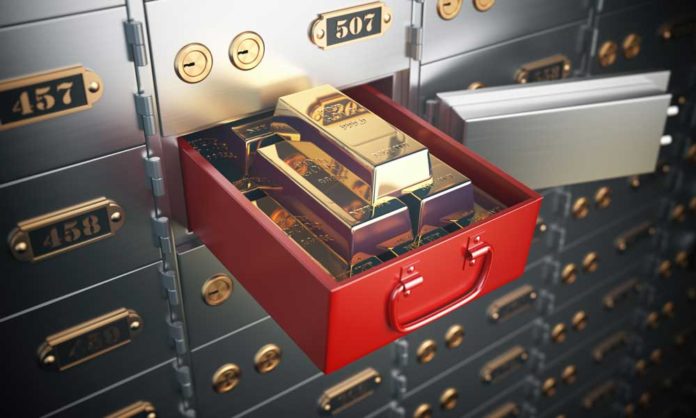The June FOMC meeting concluded yesterday, and immediately after it ended, bulls got an unexpected dose of “hawkishness” from Fed Chairman Jerome Powell. Equities fell sharply into the close in response to his post-meeting remarks, in which Powell revealed a new potential rate schedule.
The Fed anticipates that it will hike rates twice in 2023, pulling its rate increase estimate forward by one year. After the March FOMC meeting, Fed officials expected to raise rates sometime in 2024 by comparison.
Now, though, rates will go up in roughly 18 months if the Fed sticks to its guns. It’s a big “if,” however, considering that the Fed has a knack for not raising rates when it says it will.
The news was interpreted as hawkish nonetheless. The dollar surged while precious metals and commodities – both inflation hedges – slumped.
“There was a more hawkish tone from the Federal Reserve, mostly coming from the Committee but [Fed Chair Jerome] Powell also offered an upbeat assessment of the economy with small steps toward the exit,” said Michelle Meyer, Bank of America U.S. Economist, in a note Wednesday.
“The big surprise came from the dots where the median expectation is now for 2 hikes in 2023 with only 2 dots away from 2022 also showing a hike.”
But in reality, how hawkish is a pair of rate hikes in 2023? The Fed said it won’t taper its $120 billion worth of bond purchases per month. Quantitative easing (QE), as a result, is alive and well.
“You can think of this meeting that we had as the ‘talking about talking about’ meeting if you’d like,” Powell said about tapering.
“I now suggest that we retire that term, which has served its purpose.”
That hasn’t stopped analysts from using it, though, in recent comments on Powell’s remarks.
“The prospect of an earlier tapering would slow the supply of U.S. dollars and lead to a sizable decline in commodity prices across the board,” explained Jim Paulsen, chief investment strategist at the Leuthold Group.
“Commodities have been a popular investment in the last year as investors have been adding some portfolio protection against inflation. So many investors were probably overexposed going into the Fed meeting and the US dollar’s response is forcing some reconsideration.”
Perhaps the most disappointing portion of Powell’s after-meeting presentation was his insistence that inflation is transitory – something he argues is still the case despite May’s landmark Consumer Price Index (CPI) surge. Other reports, like the Personal Consumption Expenditures (PCE) outlook and Summary of Economic Projections (SEP) indicated more persistent inflation as well.
Powell did, however, acknowledge that there’s a slight chance higher inflation may end up “sticking.”
“As the reopening continues, shifts in demand can be large and rapid and bottlenecks, hiring difficulties and other constraints could continue to limit how quickly supply can adjust, raising the possibility that inflation could turn out to be higher and more persistent than we expect,” he said.
And though it’s nice to hear the Fed Chairman say that, his central bank’s continued dovishness suggests that no changes will be made to fight inflation. QE remains fully intact.
As a result, a period of persistent inflation does, too. The truth is that the Fed can’t dial back QE without dismantling both the US economy and the stock market. Powell has his hands tied and that’s unlikely to change moving forward.
So, despite the recent commodity and precious metal dips, the inflation trade is still very much “on” from a fundamental standpoint.
Despite the fact that the market is reacting like it isn’t.








